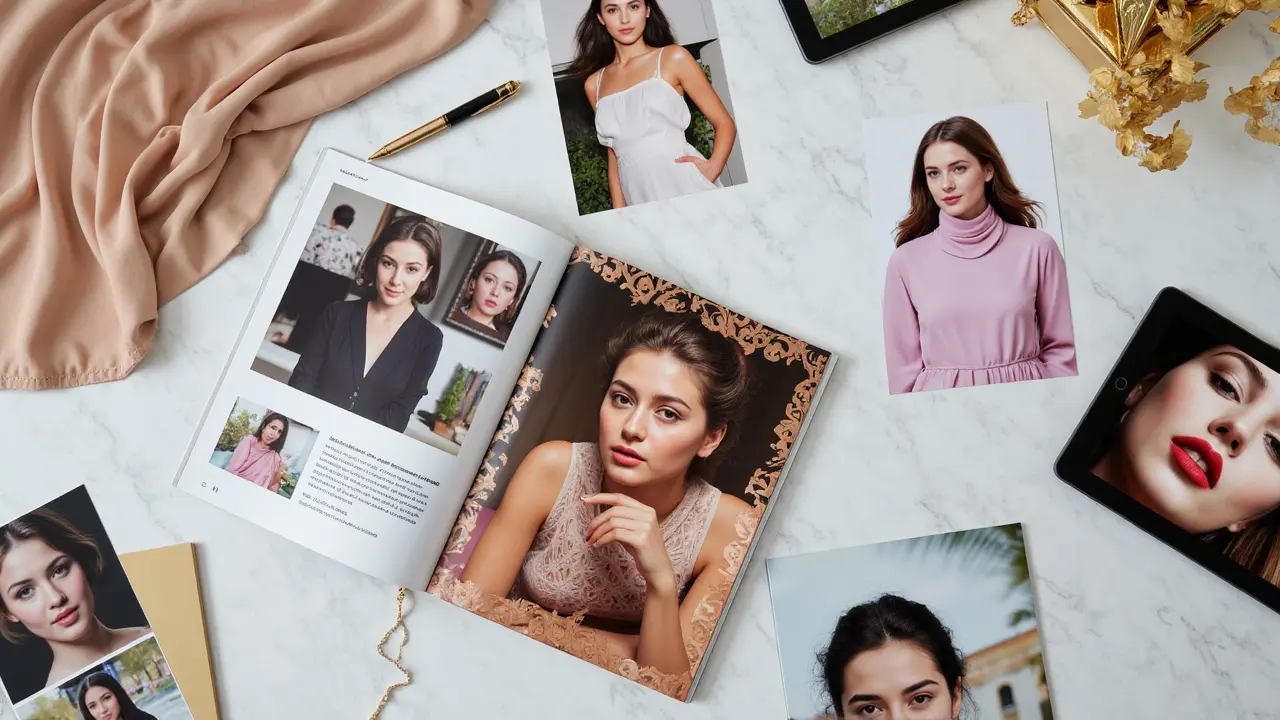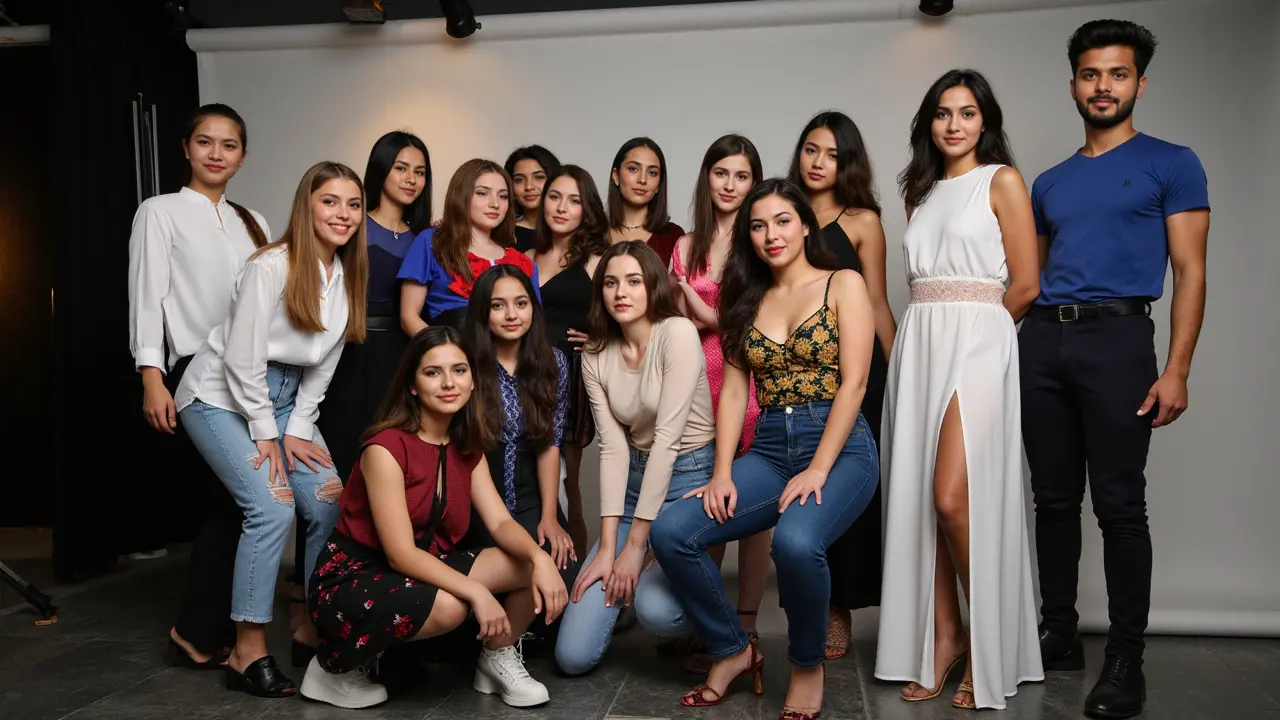Ever heard someone talk about “digitals,” “headshots,” or “lookbooks” and wondered if they’re all just fancy words for model photos? Here’s the deal: model photos actually go by a bunch of different names. The basic term is model portfolio shots, and these can be broken down into things like headshots (close-ups), full-body shots, lifestyle images, beauty shots, and commercial photos. When you see someone ask for “comp cards” or “digitals,” they’re still talking about specific types of model photos but with a different style or purpose in mind.
You don’t need to memorize every single term, but knowing the main ones helps when you’re talking to agencies, photographers, or clients. They’ll often use this lingo, and it’s a quick way to make sure everyone’s on the same page. Whether you’re just getting started or looking to step up your portfolio, understanding these terms can save you a lot of back-and-forth confusion.
- Direct Answer and Key Terms
- Why Model Photos Matter
- Different Types of Model Photos
- Tips for Building Your Model Portfolio
Direct Answer and Key Terms
If you’re searching for the real names of model portfolio photos, here’s the scoop: model photos go by a handful of specific terms in the industry. The most common umbrella term is “portfolio shots.” These are the professional images that every model uses to show off their range, looks, and posing skills when applying to agencies or gigs.
Here’s a breakdown of the words you’ll run into most:
- Digitals (Polaroids): Simple, unedited photos taken in natural light. Agencies love these because they show what you really look like.
- Headshots: Close-up images focusing on your face. Think of these as your first impression photo.
- Full-Body Shots: Pictures that show your figure from head to toe, super important for fashion modeling jobs.
- Beauty Shots: Close-up images meant to highlight facial features, skin, and makeup.
- Lifestyle Shots: Images of you in more relatable, everyday situations—think jeans and a tee, acting naturally.
- Editorial Shots: Creative, styled images you’d find in fashion magazines. High drama, lots of mood.
- Commercial Shots: Smiling, friendly images you’d see in ads or catalogs. Less edgy, more approachable.
- Comp Card Images: The best shots pulled for your “model business card.” Usually a headshot plus a few body or action shots.
Agencies and clients might ask you for one or more of these, depending on what they’re after. It’s a good idea to have a variety of these types in your arsenal. Different modeling gigs require different looks, so flexibility pays off.
To make things even easier, check out this quick table comparing the main types of model photos and their typical uses:
| Photo Type | Main Purpose | Who Uses It Most |
|---|---|---|
| Digitals | Show your natural look | Agencies, Scouts |
| Headshots | Highlight facial features & expressions | Agencies, Actors, Models |
| Full-Body Shots | Display body proportions and posture | Fashion/Runway Brands |
| Lifestyle Shots | Show real-world looks and personality | Commercial Brands, Print Ads |
| Editorial Shots | Show creative posing & styling ability | Magazines, Fashion Designers |
| Comp Card Images | Quick stats and best shots on one card | All Models, Agencies |
Getting these basic terms down is half the battle when you’re talking to photographers or booking jobs. It keeps you from getting lost in translation—and helps you look like you know what you’re doing, even if you’re brand new.
Why Model Photos Matter
If you’ve ever wondered why agencies and brands obsess over model photos, there’s a good reason. These images are basically your business card in the modeling world. The right shots can land you gigs, get you noticed by casting directors, and even open the door to bigger contracts. Messy or outdated photos? It almost always means lost opportunities.
Model portfolio pictures show what you look like, yes, but they also reveal how well you can take direction, express personality, and fit with different looks or campaigns. You may have a killer runway walk, but if your portfolio only has one stiff pose, bookers might think you can’t deliver variety.
Most agencies are looking for up-to-date, natural-looking photos—they want to see the real you, not hours of photo-editing. According to agents from top agencies in New York and London, models with clean, professional photos are about 70% more likely to get callbacks after their first submission compared to those with badly lit or old images.
These stats say it all:
| Photo Type | Callback Rate Increase |
|---|---|
| Professional Digitals | +60% |
| Updated Headshots | +45% |
| Variety (fashion, lifestyle, beauty) | +52% |
Your photos also play a key part in your social media and online presence. Brands often check Instagram or portfolio websites before scheduling castings. If your shots look good and fit their vibe, you’re way ahead of the pack.
Long story short: solid model photos aren’t just a nice-to-have, they’re your ticket in. Treat your images like an investment, and update them at least once or twice a year. It’s the smartest move you can make if you’re serious about modeling.

Different Types of Model Photos
If you’ve ever wondered what kind of photos should actually go into a model portfolio, let’s break it down. Every professional book and comp card basically boils down to a mix of a few must-have shot types. These all have a clear purpose, and agencies expect to see them if you want to stand out.
- Headshots: Think shoulders and up. These are close-up photos that show your face clearly—no wild makeup, no dramatic hair. They help agencies and clients see your natural look and features. Natural light headshots also get bonus points these days for authenticity.
- Full-body shots: Literally, your whole body from head to toe. These shots let people see your proportions. They’re almost always taken in simple, fitted clothes and natural poses. For new models, this is often the very first photo you’ll take.
- Profile shots: Side views show off your face shape, jawline, and even hair length. They might not seem as exciting, but agents really do look for these when flipping through a book.
- Beauty shots: These zoom in tighter on your face, sometimes with a little more makeup or creative lighting. The goal is to highlight your bone structure, skin, and eyes. Beauty brands especially love this style.
- Lifestyle shots: These show you in action or in more candid, real-life moments. Smiling, moving, or enjoying a scene—lifestyle images make you look approachable and natural. Commercial agencies often ask for these because they help brands picture you in their ads.
- Fashion/editorial shots: Here’s where wardrobe and attitude kick up a notch. Think cool outfits, dramatic poses, or moody lighting. These are favorites for high-fashion agencies and magazines that want to see your versatility.
- Swimwear or fitness shots: Agencies sometimes ask for these if you fit those modeling niches. They want to see your physique, confidence, and how you photograph in minimal clothing. If you’re not going for a swimwear/fitness career, you can skip these.
- Digitals (polaroids): These are unedited, basic snapshots showing your true self—no retouching, just simple poses and clean backgrounds. Think of them as the "real you" test.
If you need a quick cheat sheet on what types you’ll find in most model books, here’s a handy table that breaks it down by purpose and statement:
| Photo Type | Main Purpose | What It Shows |
|---|---|---|
| Headshot | Identification | Facial features, eye color, bone structure |
| Full-body | Proportions | Height, body shape, posture |
| Profile | Side view | Jawline, nose, hair length |
| Beauty | Up-close detail | Skin, makeup, eyes |
| Lifestyle | Personality | Smile, energy, natural vibe |
| Editorial | Artistic flair | Creativity, fashion sense |
| Digitals | Authenticity | Natural look, no edits |
Quick tip: Most agencies want at least three types—headshots, full-body, and digitals. The others help round out your book based on the kind of work you want. Don’t forget to keep your portfolio updated—the industry moves fast and older shots (anything more than a year old) make you look out-of-date.
Tips for Building Your Model Portfolio
Building a great model portfolio isn’t just about taking pretty pictures. Agencies and clients want to see real versatility, so it’s smart to plan your shoots with a specific purpose—think quality over quantity every time. Let’s break it down so you know exactly what to focus on.
First, you’ll need these key shots in your portfolio:
- Headshots – These are close-ups, usually with minimal makeup to show your natural features. Never underestimate a clean headshot—this one’s a must.
- Full-Length Shots – These show your whole body in simple, fitted clothes, front-on and in profile. Clients want clear looks with no filters or heavy editing.
- Lifestyle or Editorial Shots – These show you in action, with different moods and locations. Think natural settings, laughter, movement, and candid moments.
- Beauty Shots – Try a bold look or creative makeup for these, but keep one version clean if you’re just starting out.
If you want to impress agencies, get your photos taken by a photographer who knows the modeling world—random “Instagrammable” pics won’t cut it for a model portfolio. Some agencies even offer test shoots with their trusted photographers, so ask about that when you’re reaching out.
Mix up your wardrobe, but keep most things simple: plain jeans and a tee, simple dresses, and nothing with huge logos. Neutral backgrounds work best so you stand out. Save the super-styled or high-fashion shots for later, once you know your market.
If you’re curious about what agencies expect, check out these standard requirements from top modeling agencies in the US:
| Agency Name | Minimum Portfolio Shots | Preferred Look |
|---|---|---|
| IMG Models | 5-7 images | Natural, simple styling |
| Ford Models | 6-10 images | Minimal makeup, basic clothes |
| Elite Model Management | 5-8 images | Neutral backgrounds, clean shots |
If you’re on a budget, look for TFP (Time For Prints) collaborations—lots of photographers and new models exchange time for shots so everyone benefits. Just make sure the photographer’s work matches the agency style you’re after. And don’t forget: update your book at least twice a year or whenever your look changes. Trends change faster than you think, and having fresh shots means you’re ready for any opportunity.
